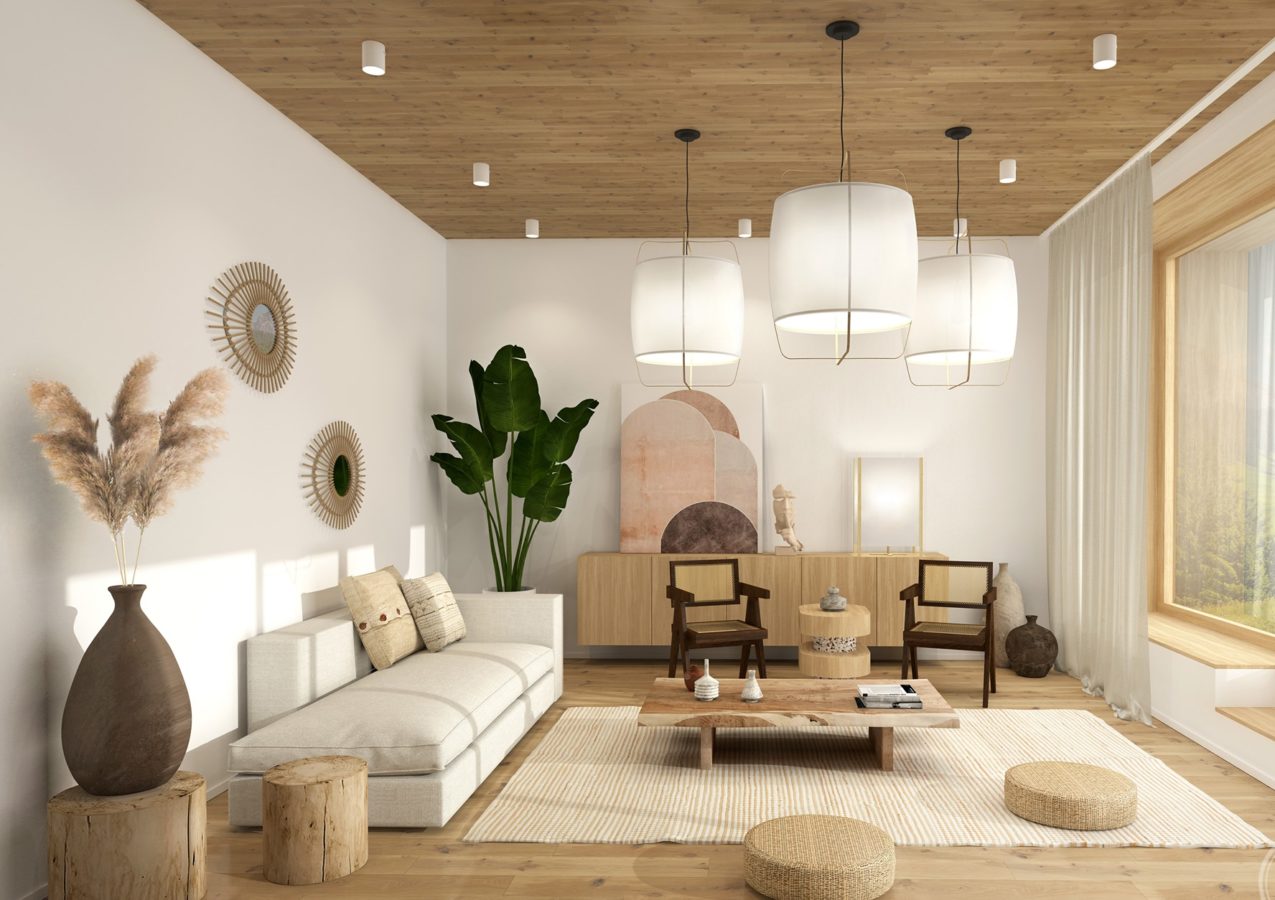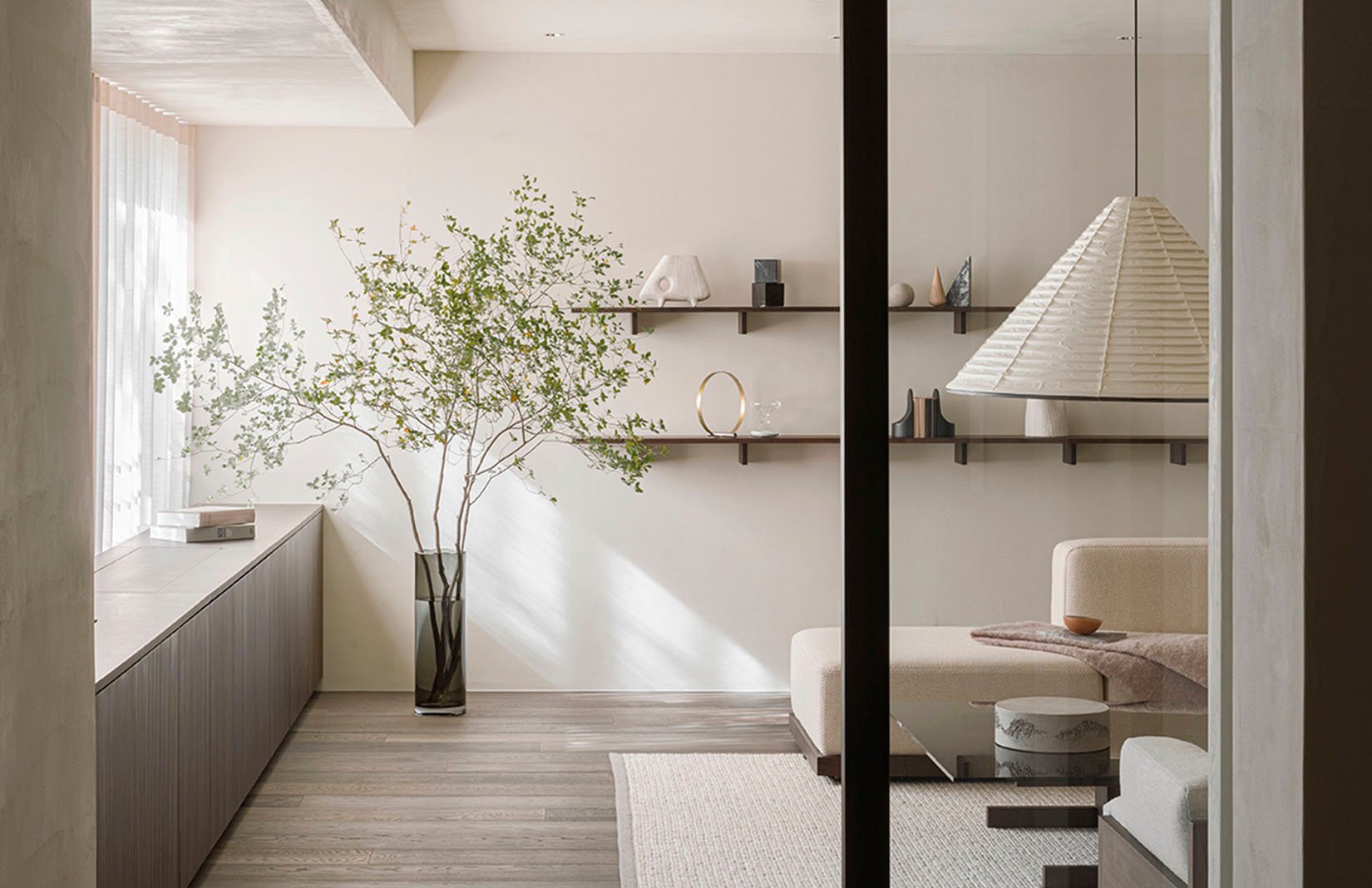Defining Japandi Interior Design

Japandi interior design seamlessly blends the minimalist aesthetics of Japanese design with the functionality and warmth of Scandinavian design. This fusion creates a harmonious and inviting space that emphasizes simplicity, functionality, and natural elements.
Japandi interior design, a harmonious blend of Japanese and Scandinavian aesthetics, embraces natural materials and organic forms. This style seamlessly transitions into the enchanting realm of woodland nursery decor, where whimsical forest creatures, soft textures, and earthy hues create a nurturing environment.
By incorporating elements such as wooden cribs, woodland nursery decor , and soft textiles, Japandi’s minimalist approach complements the playful spirit of a woodland-themed space, fostering a sense of tranquility and wonder.
Key Characteristics of Japandi Style
Japandi style is characterized by its:
- Clean lines and simple forms
- Emphasis on natural materials such as wood, stone, and bamboo
- Neutral color palette with pops of color
- Functional and clutter-free spaces
- Incorporation of traditional Japanese elements, such as shoji screens and tatami mats
Incorporating Japandi Elements into Different Room Designs
Japandi elements can be incorporated into various room designs to create a serene and inviting atmosphere.
Japandi interior design’s minimalist aesthetic pairs perfectly with the organic textures of wicker wall decor. The intricate woven details and warm tones of wicker add a touch of warmth and depth to the sleek lines and neutral hues of Japandi.
By incorporating wicker wall decor, you can create a harmonious blend of Japanese and Scandinavian influences, resulting in a space that exudes both serenity and style.
- Living Room: A Japandi living room might feature a neutral-colored sofa with clean lines, paired with a wooden coffee table and a few carefully chosen accessories, such as a ceramic vase or a woven throw blanket.
- Bedroom: A Japandi bedroom might have a low-profile bed frame made of natural wood, with a simple headboard and soft, neutral-colored bedding. A tatami mat could be used as a rug, adding warmth and texture to the space.
- Kitchen: A Japandi kitchen might feature sleek cabinetry with hidden storage, wooden countertops, and a minimalist backsplash. Open shelving could be used to display essential items, while a few well-chosen plants could add a touch of nature.
Exploring the Elements of Japandi Design

Japandi design seamlessly blends the aesthetics of Japanese and Scandinavian styles, resulting in harmonious interiors that exude both warmth and simplicity. Natural materials, clean lines, open spaces, and a balance between form and function are the defining elements of this design approach.
Natural Materials
Natural materials play a crucial role in Japandi design, bringing a sense of organic beauty and tranquility to the space. Wood, stone, and bamboo are commonly used, often in their raw or unfinished forms. The natural textures and imperfections of these materials add character and warmth to the interior.
Clean Lines and Open Spaces
Japandi interiors are characterized by clean lines and open spaces. This creates a sense of spaciousness and tranquility, allowing the natural beauty of the materials to take center stage. Furniture is often simple and functional, with an emphasis on quality craftsmanship.
Asymmetry
Asymmetry is another important element of Japandi design. Instead of striving for perfect symmetry, Japandi interiors embrace the beauty of imbalance. This can be achieved through the placement of furniture, the arrangement of artwork, or the use of different textures and materials.
Balance Between Form and Function
Japandi design strikes a delicate balance between form and function. Furniture and décor pieces are not only aesthetically pleasing but also serve a practical purpose. This approach ensures that the space is both beautiful and comfortable, creating a harmonious living environment.
Japandi Decor and Furnishings: Japandi Interior Design

Japandi decor and furnishings blend the minimalist aesthetics of Japanese design with the cozy, functional elements of Scandinavian design. The result is a style that is both elegant and inviting, with a focus on natural materials and simple, organic shapes.
Japandi furniture is typically characterized by its clean lines, simple silhouettes, and organic shapes. Common materials include wood, metal, and leather, and pieces often feature a combination of these materials. Japanese-inspired joinery techniques, such as joinery, are also commonly used in Japandi furniture.
Japandi Furniture
| Furniture Type | Characteristics | Examples |
|---|---|---|
| Sofa | Low-profile, with clean lines and simple silhouettes. May feature a combination of wood, metal, and leather. | IKEA Stockholm Sofa, Muji Armless Sofa |
| Chair | Simple design, with a focus on comfort and functionality. May feature a combination of wood, metal, and leather. | Hans Wegner CH24 Wishbone Chair, Nitori Wood and Metal Chair |
| Table | Simple, clean lines with a focus on functionality. May feature a combination of wood, metal, and glass. | IKEA Lack Table, Muji Oak Dining Table |
| Bed | Low-profile, with a simple headboard and clean lines. May feature a combination of wood, metal, and fabric. | IKEA Malm Bed, Muji Wood Bed Frame |
Japandi decor items also reflect the style’s emphasis on natural materials and simple shapes. Common items include ceramics, textiles, and artwork. Ceramics often feature a matte finish and earthy tones, while textiles are typically made from natural fibers such as cotton, linen, and wool. Artwork often features abstract or natural motifs.
Japandi Decor
- Ceramics: Matte finish, earthy tones, simple shapes.
- Textiles: Natural fibers (cotton, linen, wool), simple patterns.
- Artwork: Abstract or natural motifs, muted colors.
- Plants: Bonsai trees, succulents, bamboo.
- Accessories: Baskets, trays, candles, throws.
When choosing and arranging Japandi accessories, it is important to keep in mind the style’s emphasis on simplicity and functionality. Accessories should be chosen for their aesthetic value as well as their practical use. They should also be arranged in a way that is both visually appealing and functional.
Choosing and Arranging Japandi Accessories, Japandi interior design
- Choose accessories that are simple and functional.
- Choose accessories that are made from natural materials.
- Choose accessories that have a muted color palette.
- Arrange accessories in a way that is visually appealing and functional.
- Use accessories to add personality to your space.